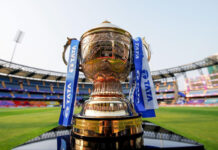Tekalgudem (sukma), Feb 5
For personnel of the Central Reserve Police Force’s Battalion 150, currently engaged in fighting the dangerous Maoist insurgents of the People’s Liberation Guerrilla Army at Tekalgudem in Chhattisgarh’s Sukma district, an unusual companion helps lighten the mood.
Chamunda, a 10-year-old male goat, has been with the battalion for nearly its entire life, with the personnel taking it along as they move from one post to another as part of their fight against the Naxals.
On Thursday, a day after security forces cordoned the new police camp at Tekalgudem and drove back the Naxals – an encounter in which three CRPF personnel died, including one from Battalion 150 – Chamunda could be seen moving freely around the camp, chewing on leaves.
It was in 2014, when the battalion was posted at Kankerlanka village in Sukma, that some personnel found the goat, then just around 45 days old and suffering from illness, abandoned by its herd near their camp.
It was unable to walk, and the battalion took it under its care and nursed it back to health.
“Whenever we go for a task or return from a task we chant Chamunda Mata ki jai. So that day, we took Chamunda Devi’s name and gave the goat a malaria tablet. After consuming the tablet, the goat got better and stayed back in the camp,” a jawan from the battalion said.
The battalion, which has strong links to Ajmer in Rajasthan, where the Chamunda Devi temple is located, named the goat Chamunda.
It has travelled with the battalion in the decade since then, and there is even a special vehicle used to transport it from camp to camp. During this period, Chamunda has moved with the battalion through seven police camps in the Naxal-affected Bastar region.
If Chamunda falls ill, the jawans go to the extent of getting medicine for him all the way from Raipur.
“He is like a family member now. Chamunda is very disciplined, friendly and playful. Unlike other goats, when you push him, he does not hit you with his horns, instead he pushes you back.
He likes it when we pet him, and does not eat or drink water until we serve it to him. He freely moves around the camp – from one tent to another – and the jawans happily feed him,” a jawan said.



























